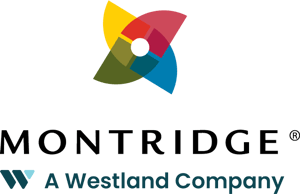According to a Healthcare of Ontario Pension Plan by Abacus Data survey, a secure retirement remains of greater concern for Canadians than concerns about their health, debt load, and job security. “A majority (70%) of Canadians say they’re willing to forgo a higher salary in exchange for a workplace pension plan.”

We’ve seen similar studies and similar findings—Canadians are concerned about their financial well-being in retirement, and they want their employers to help. Even with all of this information, far too many companies are still reluctant to add a retirement plan for the employees.
On the other hand, top employers understand the importance of these programs and the positive impact they can have on their employees. Not only do these companies take the steps to set up a plan, but they also take additional steps to promote it and maximize its value. They ensure employees understand the programs and benefits, and then the employees are rewarded by an improvement to their overall financial well being.
From the employee’s perspective, this might be their first exposure to investing and financial planning. It can be overwhelming at first. As an employer, you should take the time to develop an overall strategy to maximize their experience to get the most out of the plan. The following are some tips that you can use to help your staff get the most out of your plan.
Encourage the Benefits of Enrolment
Because most employer sponsored retirement plans are set up as voluntary, the decision to participate is often left up entirely to the plan member. Most of our clients have high participation rates. But even with all the benefits available to plan members, some employees will not sign up for your plan. More commonly we have found that it is employees using their own self-directed accounts who choose not to participate. Reasons vary, but more commonly the employee believes they will outperform the available options in the group plan. The mistake here is overlooking the matching contribution employers make on their behalf. Often a reminder is needed that these matching amounts are 1) free money, set aside for their retirement and 2) a 100% rate of return on any money they contribute that is entitled to match.
To promote enrolment, offer ongoing education sessions that highlight all of the plan benefits and encourage your employees to sign up. Work with your advisor to put together communication pieces (email templates, flyers and posters for the office, how to videos) that will help you get the message out to your staff.
And a reminder that email campaigns should be sent annually to those employees who have still not enrolled. From an HR perspective you want to document that you have communicated the plan to the employee and given them an opportunity to enrol.
Encourage goal settings

What’s life going to be like in retirement? How much is it going to cost to live that life? How much money do you have to save?
There is no right answer to these questions because everybody has their own unique vision of what their retirement is going to look like. But just trying to picture retirement is a challenge for a number of employees. Perhaps younger employees haven’t thought about something that seems so far away. Or maybe older employees put it off only to realize that retirement is now on the near horizon.
The key to retirement success is setting retirement goals, preferably sooner than later, and adjusting accordingly. Montridge provides education sessions catered to specific employee demographics to help employees prioritize their goals. And all insurers that we work with now provide incredible retirement planning tools to assist members.
There is so much more to these plans than just the investments and contributions being made into an account. We remind employees of all of these tools and resources in our education sessions. And we have worked with companies to create communication campaigns to raise awareness about the other features that are included in your plan.
Educate Employees about Investing
How employees choose to invest their contributions can impact their rate of return and how much money will be accumulated by the time they retire. Therefore, it’s important to design a plan with this in mind and ensure there are suitable investment choices. To make proper investment decisions, a person needs to have some element of investment knowledge.
We provide education sessions that focus on investment basics, and insurance companies continue to provide a number of tools and research materials for investing. Many employees don’t have the time or don’t want to learn about investing, and that’s okay. But it's important that the company works with its benefits advisor to ensure that the plan includes an appropriate default fund and a number of ‘do it for me’ options to make their lives easier.
Educate Employees about Market Fluctuations

This is related to above, as investment performance will vary depending on market conditions. There is an emotional component to investing, especially when we see rapid declines such as the one in March of 2020 at the beginning of the pandemic. Panic selling at that time ensured many investors took the worst of the declines and missed the rebound before getting back into the markets. Investment decisions need to be driven by the overall investment objectives and time horizons, not based on emotion or intuition. Which is why it is so important to set retirement goals in the first place and stick to your overall plan. When it comes to market performance, educate employees and provide resources that help them understand how markets perform. Give them some strategies to cope with uncertainty. You want employees to maximize their savings in your plan, not erode them by overreacting to and engaging in bad investor behaviour.
Make it a Game
If you make something fun, chances are you’ll find higher engagement and participation from your staff. All of the tools and resources provided by service providers are great, but it can be a lot of information to sift through and ‘retirement’ isn’t exactly the most entertaining subject to think about. So make it fun. There are a number of gamification software apps available to encourage engagement and learning about your company’s benefit plans. For example, myFinances by Morneau Shepell, is a mobile first web app to help you “build a more resilient future for your employees by improving people’s financial wellbeing while effectively managing cost, improving engagement, and driving productivity in your business.”
Final Thoughts
These are a few of the ideas to help your employees get the most out of their group retirement plan. Setting up the plan is the first step and already puts you into a competitive advantage for talent when your competition doesn’t offer a plan. But don’t let it stop there. Taking the above steps helps your employees understand the value of the program you have implemented. But more importantly, it can improve their financial well being and that results in a more engaged and productive work environment.

Canadian Benefits 102: Retirement & Savings Programs
Our webinar provides an overview of Canadian employer-sponsored retirement and savings programs.
View Webinar





